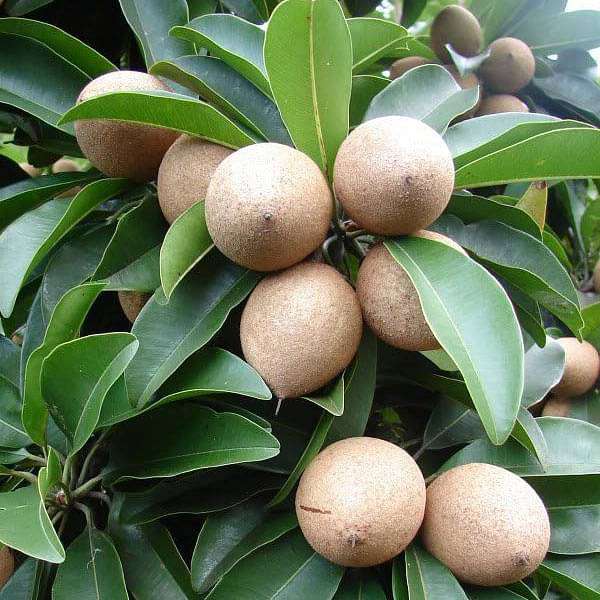
Chiku, Chikku, Chikoo - 0.5 kg Seeds
(MRP Inclusive of all taxes)
- Shipping ₹79 for entire order
- Dispatch in 2-3 weeks
- Country of origin: India

(MRP Inclusive of all taxes)
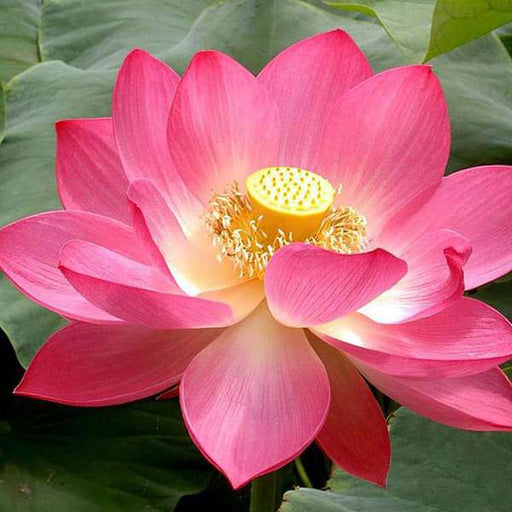 Save 15%
Save 15%
Nelumbo Nucifera, Lotus (Mix Colors) - 0.5 kg Seeds Discover the enchanting beauty of Nelumbo Nucifera, commonly known as the Lotus, with ...
View full details Save 15%
Save 15%
Roystonea Regia, Royal Palm - 0.5 kg Seeds The Roystonea Regia, commonly known as the Royal Palm, is a majestic tropical tree native to th...
View full details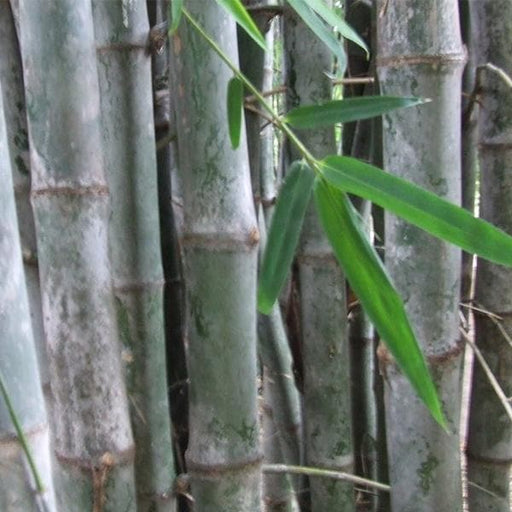
 Save 15%
Save 15%
Dendrocalamus Strictus, Solid Bamboo - 0.5 kg Seeds Dendrocalamus Strictus, commonly known as solid bamboo, is a remarkable species renown...
View full details Save 15%
Save 15%
Sandal Wood White, Chandan White - 0.5 kg Seeds Discover the enchanting world of Sandal Wood White (Chandan White) with our premium 0.5 kg...
View full details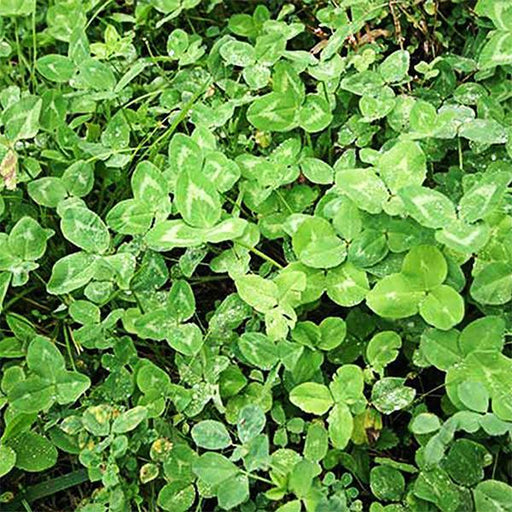 Save 15%
Save 15%
Durana White Clover - 0.5 kg Seeds Durana White Clover (Trifolium repens) is a premium forage legume known for its exceptional adaptabilit...
View full details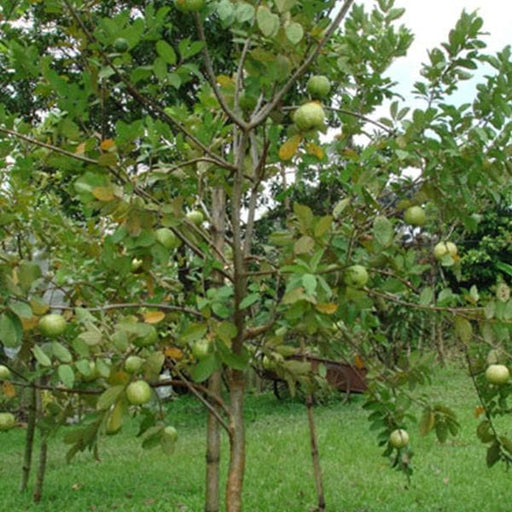
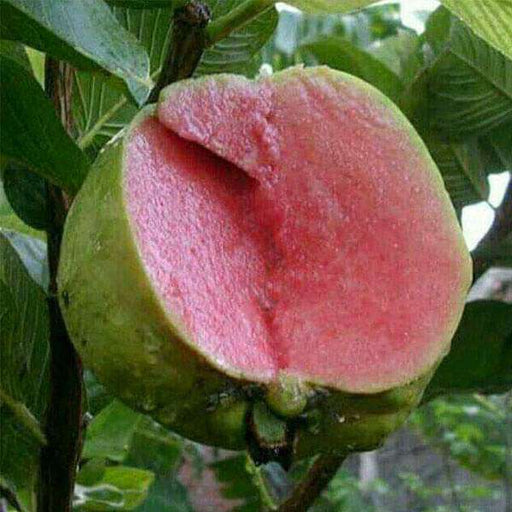 Save 15%
Save 15%
Guava, Amrud Allahabadi - 0.5 kg Seeds Discover the delightful taste of Amrud Allahabadi, a premium variety of guava known for its sweet, ...
View full details
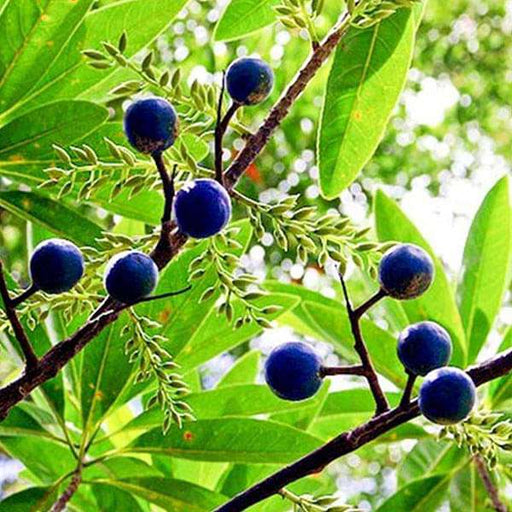 Save 15%
Save 15%
Elaeocarpus Ganitrus, Rudraksha - 0.5 kg Seeds Discover the mystical charm of Elaeocarpus Ganitrus, commonly known as Rudraksha. These sac...
View full details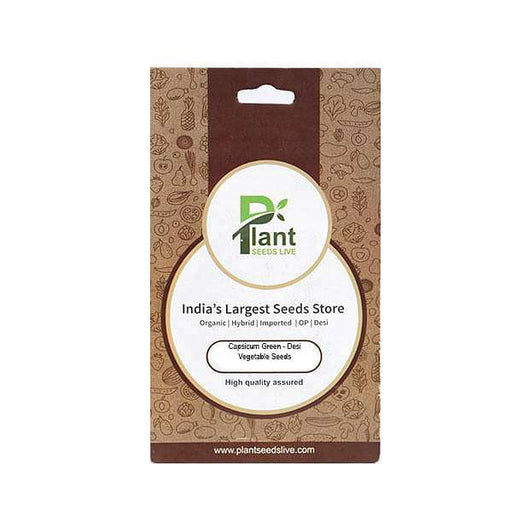
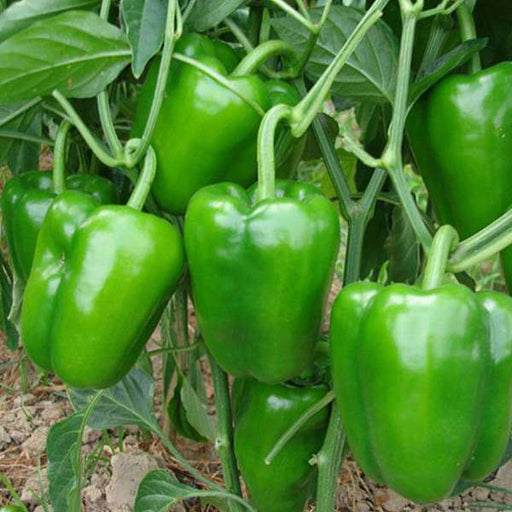 Sold out
Sold out
Capsicum Green - Desi Vegetable Seeds Capsicum Green, also known as bell pepper, is a vibrant and nutritious addition to your garden. Thes...
View full details
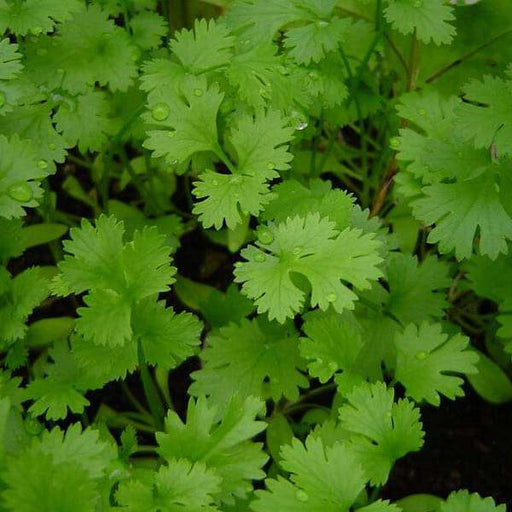 Save 25%
Save 25%
Coriander Panipat - Desi Vegetable Seeds Coriander Panipat is a premium variety of coriander seeds, cherished for its aromatic leaves and ...
View full details
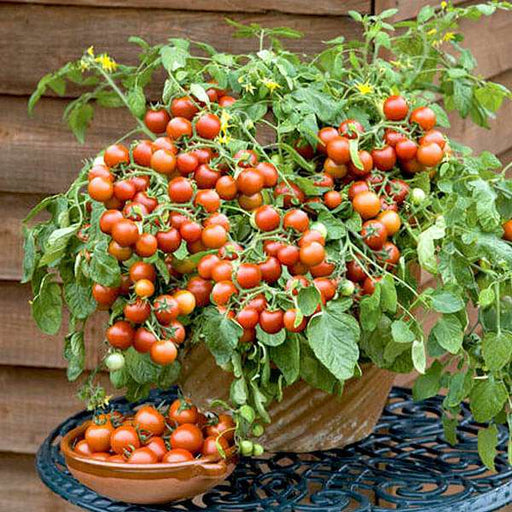 Save 25%
Save 25%
Cherry Tomato, Cherry Tomato Honey - Vegetable Seeds Discover the delightful world of Cherry Tomato Honey seeds, perfect for home gardener...
View full details
 Sold out
Sold out
Tomato Pusa Ruby - Desi Vegetable Seeds The Tomato Pusa Ruby is a premium variety of tomato seeds, renowned for its vibrant red color, jui...
View full details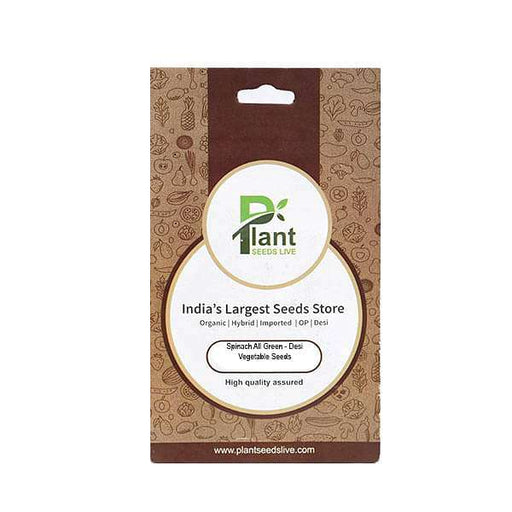
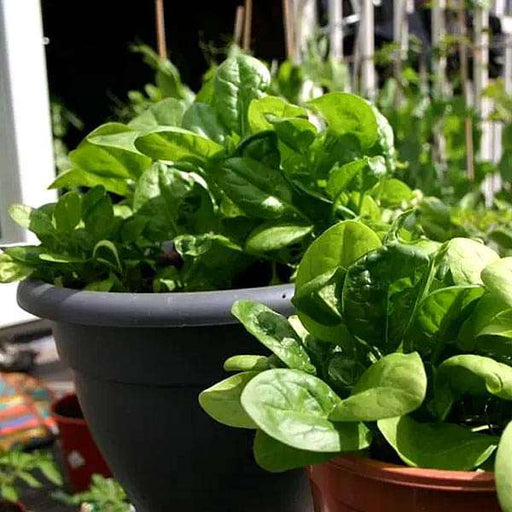 Sold out
Sold out
Spinach All Green - Desi Vegetable Seeds Introducing the Spinach All Green - Desi Vegetable Seeds, a premium variety of spinach that thriv...
View full details
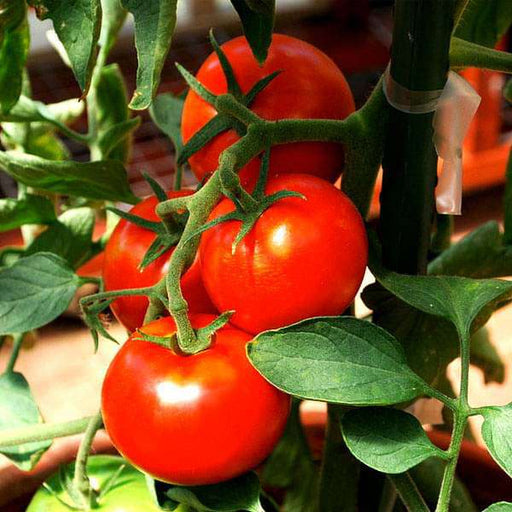 Save 25%
Save 25%
Tomato Ped - Desi Vegetable Seeds Introducing the Tomato Ped - Desi Vegetable Seeds, a premium selection of heirloom tomato seeds that pro...
View full details
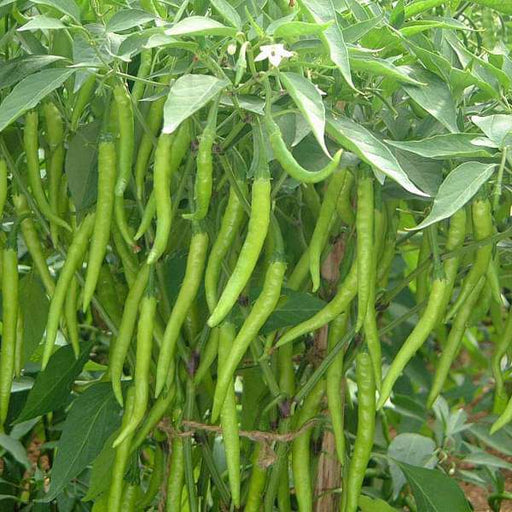 Save 25%
Save 25%
Chilli Surajmukhi - Desi Vegetable Seeds Introducing the Chilli Surajmukhi, a unique variety of desi vegetable seeds that brings a burst o...
View full details
 Save 25%
Save 25%
Carrot Red Long - Desi Vegetable Seeds Introducing the Carrot Red Long - Desi Vegetable Seeds, a premium variety known for its vibrant col...
View full details
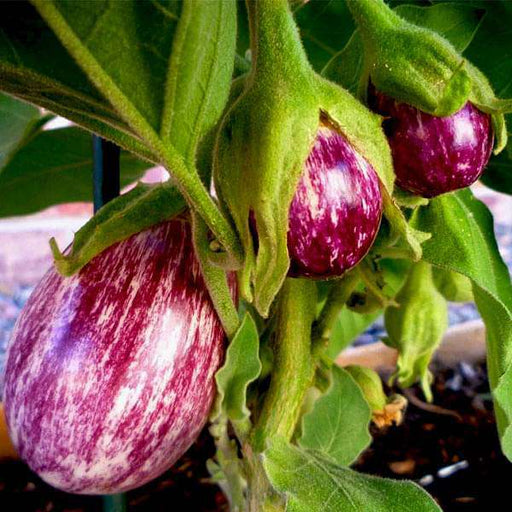 Sold out
Sold out
Brinjal Purple Round - Desi Vegetable Seeds Discover the rich flavors and vibrant colors of Brinjal Purple Round, a staple in Indian cuisi...
View full details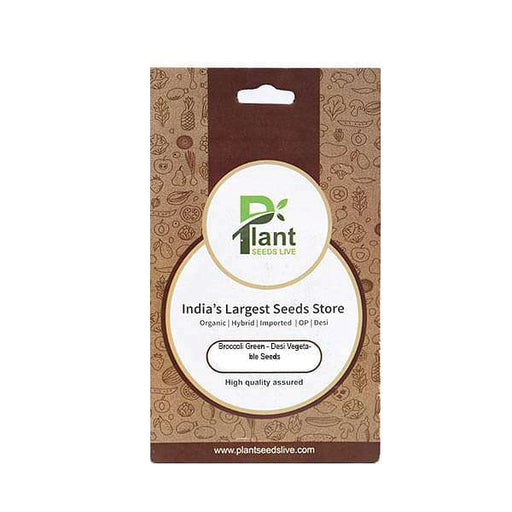
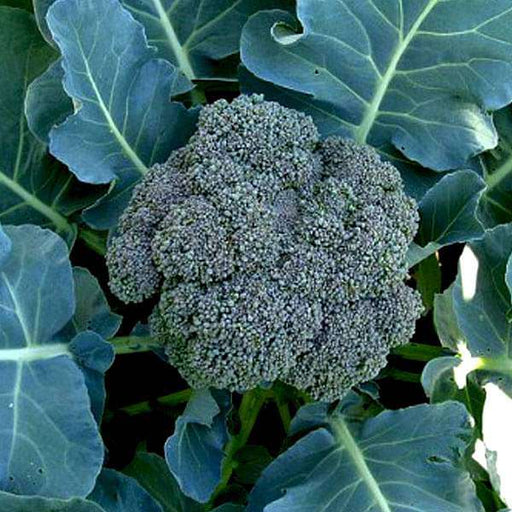 Save 25%
Save 25%
Broccoli Green - Desi Vegetable Seeds Discover the vibrant world of Broccoli Green with our premium Desi Vegetable Seeds. Known for its ri...
View full details
 Save 35%
Save 35%
Best 6 Plants for Perfect Indoor Garden Transform your living space into a lush oasis with our curated collection of the Best 6 Plants for a...
View full details
 Save up to 50%
Save up to 50%
Mini Succulent Garden Pack Transform your space with our Mini Succulent Garden Pack, featuring a delightful collection of 4 any variety beautiful s...
View full details
 Save 30%
Save 30%
5 Best Fragrant Plants Transform your garden or indoor space into a fragrant paradise with our curated selection of the 5 Best Fragrant Plants. Th...
View full details
 Save 24%
Save 24%
Set of 2 Bonsai Looking Grafted Adeniums Transform your indoor or outdoor space with our exquisite Set of 2 Bonsai Looking Grafted Adenium...
View full details Save 45%
Save 45%
Top 4 Die Hard Succulents Pack Transform your indoor or outdoor space with our Top 4 Die Hard Succulents Pack, featuring a curated selecti...
View full details
 Save 30%
Save 30%
5 Best Indoor Plants Pack Transform your living space into a lush oasis with our '5 Best Indoor Plants Pack.' This carefully curated collection fe...
View full details
 Save 25%
Save 25%
Set of 4 Evergreen Air Purifier Plant Pack Transform your indoor space into a lush, green oasis with our Set of 4 Evergreen Air Purifier Pla...
View full details| SrNo | Item Name |
|---|---|
| 1 | Chiku, Chikku, Chikoo - 0.5 kg Seeds |
Discover the delightful taste of Chiku, also known as Sapodilla, with our premium 0.5 kg seeds. This tropical fruit, native to Central America, is cherished for its sweet, malty flavor and grainy texture. Rich in vitamins A, C, and E, Chiku is not only delicious but also packed with health benefits, making it a perfect addition to your garden.
Chiku is special for its adaptability to various climates and its ability to thrive in poor soil conditions. This hardy tree can grow up to 30 feet tall, providing shade and beauty to your landscape while yielding an abundance of fruit. With its unique flavor profile and nutritional benefits, Chiku is a must-have for any fruit enthusiast.
Our Chiku seeds are sourced from the finest varieties, ensuring high germination rates and robust growth. Each seed is carefully selected to provide you with the best possible start for your gardening journey. Enjoy the satisfaction of growing your own fruit while contributing to a sustainable environment.
Chiku is not just a fruit; it's a treasure trove of nutrients. It contains dietary fiber, antioxidants, and essential minerals like potassium and iron. Historically, it has been used in traditional medicine for its anti-inflammatory and digestive properties. Cultivating Chiku in your garden not only enhances your diet but also supports biodiversity.
Growing Chiku trees contributes positively to the environment by improving air quality and providing habitat for various species. Their deep roots help prevent soil erosion, making them an excellent choice for sustainable gardening practices.
If you think taking care of a Chiku tree is as easy as pie, think again! These tropical beauties require a bit of TLC. They thrive in well-drained soil and love a sunny spot, so make sure to give them the royal treatment. Water them regularly, but don’t drown them—Chikus prefer a sip over a swim. And remember, a little pruning goes a long way in keeping your tree healthy and happy.
Chiku, also known as sapodilla, is not just a pretty face in the fruit world. Packed with vitamins A and C, this sweet delight is a powerhouse of nutrition. It’s great for digestion, boosts immunity, and even helps keep your skin glowing. So, indulge in this caramel-flavored treat guilt-free, because who knew being healthy could taste so good?
Ready to play the waiting game? Germinating Chiku seeds is like watching paint dry, but with a little patience, you’ll be rewarded with a lush tree. Start by soaking the seeds overnight to give them a head start. Plant them in well-draining soil, and keep them warm and moist. In a few weeks, you’ll see those little green shoots popping up, and trust us, it’s worth the wait!
If you’re dreaming of a towering Chiku tree, you’re in for a treat! These trees can grow up to 30 feet tall, making them the gentle giants of your garden. But don’t worry, they won’t overshadow your other plants; they’re more of a laid-back type. Just give them enough space to spread their branches, and they’ll reward you with a bountiful harvest of sweet fruits.
Did you know there’s more than one type of Chiku? That’s right! From the classic brown-skinned variety to the more exotic green-skinned ones, each has its own unique flavor profile. Some are sweeter, while others have a hint of spice. So, if you’re a fruit connoisseur, why not try growing a few different varieties? Your taste buds will thank you!
Harvesting Chiku is like a treasure hunt in your backyard. Wait until the fruits turn a golden brown and feel slightly soft to the touch. Gently twist them off the branches, and voilà! You’ve struck gold. Just be careful not to pick them too early; nobody likes a sour surprise. Enjoy the fruits of your labor, literally!
Every garden has its villains, and Chiku trees are no exception. Watch out for pesky pests like aphids and mealybugs that might try to crash your Chiku party. But fear not! A little neem oil or insecticidal soap can send them packing. Keep an eye on your leafy friends, and you’ll keep the bad guys at bay.
Who said Chiku is just for eating fresh? Get creative in the kitchen with this versatile fruit! Blend it into smoothies, whip up a Chiku ice cream, or even bake it into a pie. The possibilities are endless, and your friends will be begging for your secret recipes. So, roll up your sleeves and let the culinary adventure begin!
Chiku isn’t just a sweet treat; it’s a nutritional powerhouse! With fiber, antioxidants, and essential vitamins, it’s like nature’s candy with benefits. It’s low in calories, making it a guilt-free indulgence. So, the next time you munch on a Chiku, remember you’re not just satisfying your sweet tooth; you’re also doing your body a favor!
Planting a Chiku tree is like starting a new relationship—choose the right spot, give it love, and watch it grow! Dig a hole twice the size of the root ball, add some compost, and place your tree in. Water it well, and soon you’ll have a new best friend that rewards you with delicious fruits. Just remember, patience is key!
Pruning your Chiku tree is like giving it a stylish haircut. It helps maintain its shape and encourages healthy growth. Snip away any dead or overcrowded branches, and don’t be shy about giving it a trim. Your tree will thank you by producing more fruits, and you’ll feel like a gardening guru in no time!
Want to give your Chiku tree a boost? Fertilizing is the secret sauce! Use a balanced fertilizer during the growing season to keep your tree thriving. Organic options like compost or well-rotted manure work wonders too. Just remember, too much of a good thing can be bad, so follow the instructions and watch your tree flourish!
Chiku, Chikku, or Chikoo is the delicious fruit of the sapodilla tree, known for its sweet, malty flavor. It’s like nature’s candy, perfect for snacking or adding to smoothies. With 0.5 kg seeds, you can grow your own mini orchard and impress your friends with your gardening prowess. Who knew fruit could be so fun
Planting Chiku seeds is as easy as pie! Just soak them overnight, plant them in well-drained soil, and give them a sunny spot. Water them regularly, and soon you’ll have a sapodilla tree that’ll make your neighbors green with envy. Remember, patience is key; good things come to those who wait (and water)!
Chiku loves warm weather, so think tropical vibes! It thrives in temperatures between 20°C to 35°C. If you live in a cooler climate, consider growing it in a pot and bringing it indoors during winter. Just imagine your friends’ faces when they see a tropical tree in your living room!
Patience, my friend! Chiku seeds typically take 2 to 3 weeks to germinate. It’s like waiting for a surprise party; the anticipation makes it all the more exciting! Keep the soil moist and warm, and soon you’ll see those little green shoots popping up, ready to take on the world.
Water your Chiku plant when the top inch of soil feels dry. It’s like giving your plant a refreshing drink after a long day. Just don’t drown it; Chiku prefers a well-drained environment. Too much water can lead to root rot, and nobody wants a soggy sapodilla!
Chiku loves well-drained, sandy loam soil. Think of it as the perfect beach vacation for your plant! A pH level of 6 to 7 is ideal, so mix in some organic matter to keep it happy. Your Chiku will thrive, and you’ll be the proud parent of a fruity superstar!
Absolutely! Growing Chiku in a pot is like giving it a cozy apartment. Just ensure the pot has drainage holes and is large enough for the roots to spread. With proper care, you can enjoy fresh Chiku even in limited space. Who says you need a backyard for a tropical paradise
Ripe Chiku fruit is like a sweet hug from nature! It should feel slightly soft to the touch and have a sweet aroma. If it’s hard as a rock, it’s not ready for the party yet. Give it a few days, and soon you’ll be indulging in its deliciousness!
Chiku plants can attract pests like aphids and mealybugs. Think of them as uninvited guests at your fruit fiesta! Keep an eye out and use organic insecticides or neem oil to keep them at bay. Your Chiku deserves a pest-free life, just like you deserve a drama-free day!
While Chiku seeds are not toxic, they’re not exactly a gourmet treat either. Eating them is like munching on a rock—hard and not very tasty! It’s best to stick to the sweet, juicy fruit and leave the seeds for planting. Your taste buds will thank you!
Propagating Chiku is like creating your own fruit army! You can do it through seeds or by grafting. If you choose seeds, follow the planting tips above. Grafting is a bit more advanced, but it can yield fruit faster. Either way, you’ll be the proud commander of your fruity battalion!